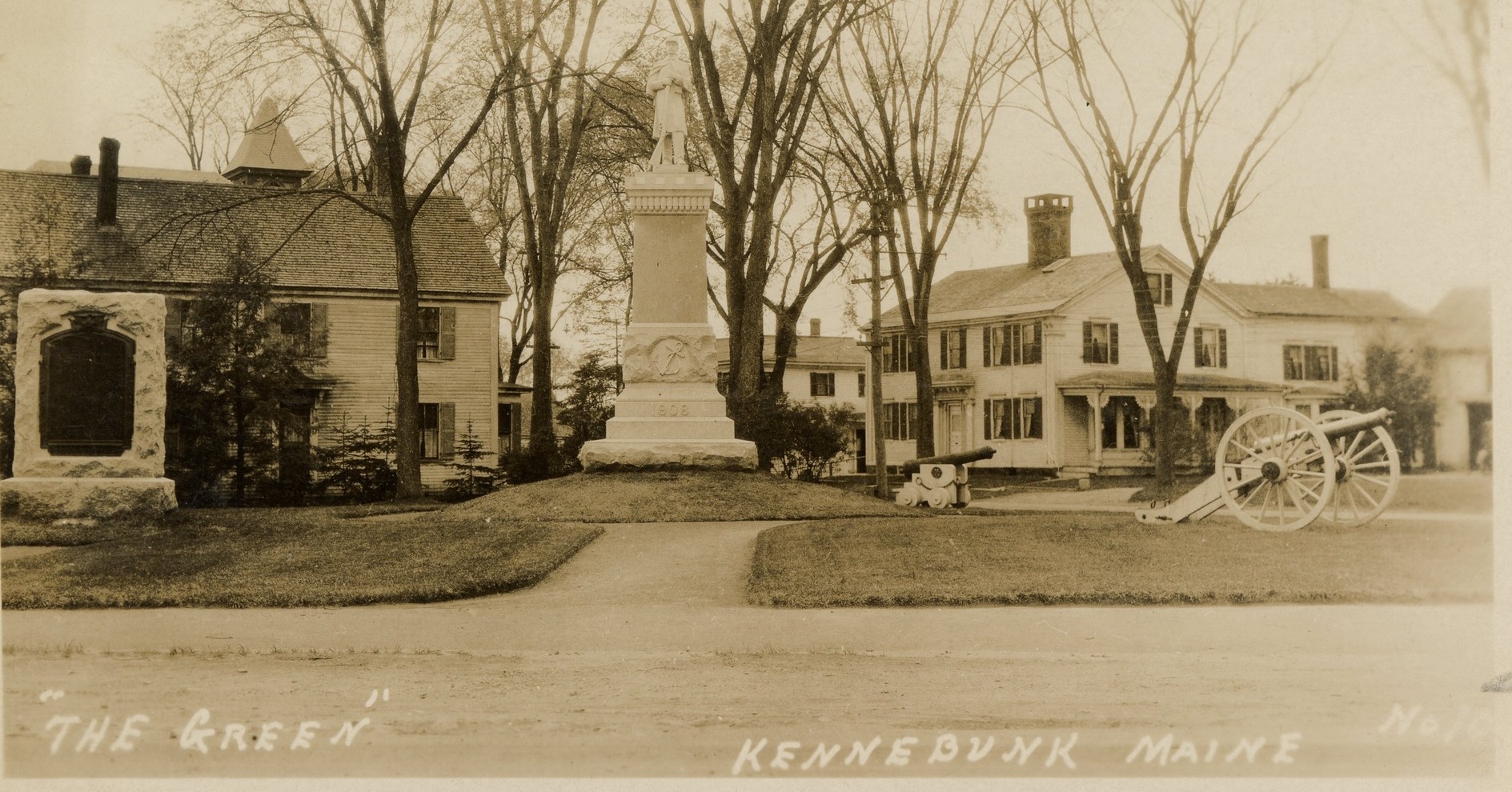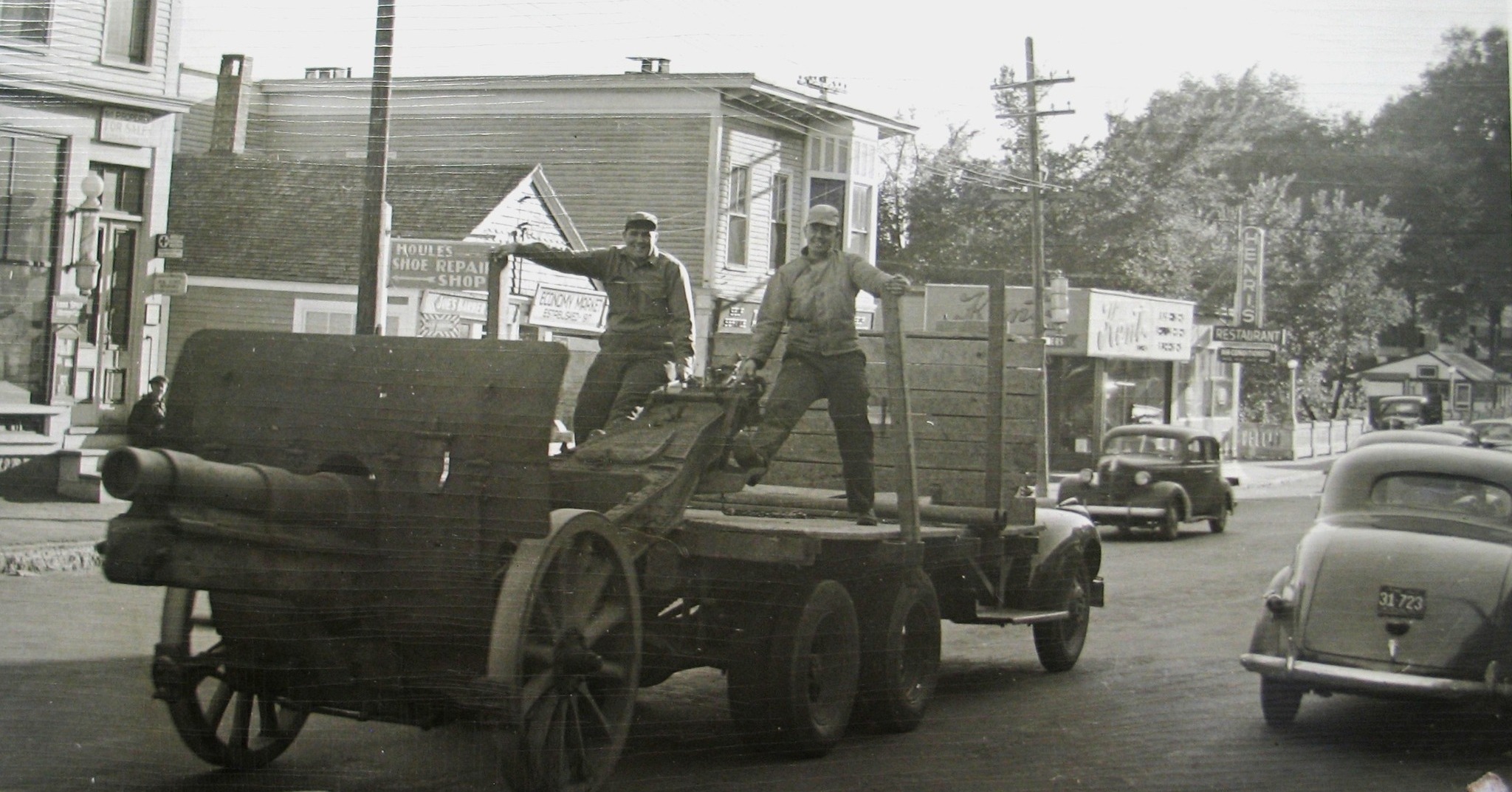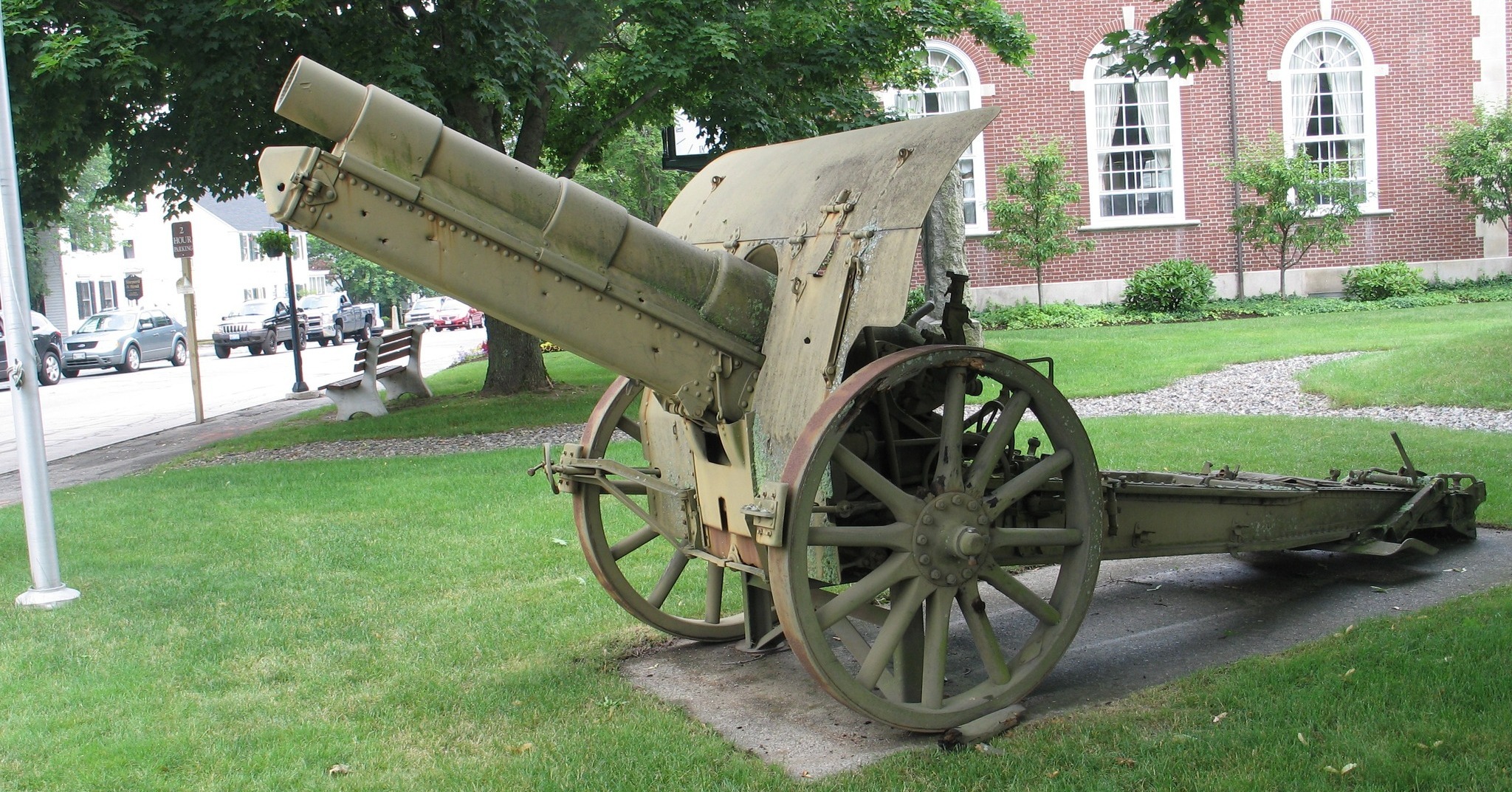Kennebunk Cannons
The first picture I’m sharing today shows The Kennebunk Green as it was in 1927. Henry Parsons donated the land at the corner of Main and Fletcher Streets to Kennebunk for a Civil War Memorial. The Civil War Memorial Statue was unveiled there on October 24, 1908.
The small Revolutionary War era ships cannon on the little wooden cart was once owned by Captain Wm Lord, Jr. It was half-buried on Main St for many years and used as a hitching post. It was occasionally pulled out and fired for public occasions with disastrous results. Lord’s descendant, William Barry built the little cart for it and donated it to the Town of Kennebunk. It is currently at the Brick Store Museum. The cannon with larger wheels was brought to Kennebunk by Legislator, Charles (Mayor) Perkins in 1911. It was subsequently stolen from the Town of Kennebunk. The WWI Soldiers plaque was installed in 1920.
A June 7, 1924 Act of Congress provided for the distribution of captured enemy artillery as war memorials for American cities and towns. Maine was allotted its share of German WWI field guns and the Harold A. Webber American Legion Post was the first to apply for one. The request was passed over. Henry Parsons, a member of Kennebunk’s American Legion Post, stepped forward again. Thanks to his efforts, a German 150mm sFH13 Lang Howitzer, captured off a French battlefield, arrived at the depot on a flat bottom car in August 1928 riddled with shrapnel and bullet holes; clear evidence it had seen combat against the allied forces. The 4700 pound field gun was unloaded and delivered to the lawn near Town Hall, seen in the second photo.
At the beginning of WWII, The Legion contributed the Howitzer to a war effort scrap drive, to be cut up for bullets. As it turned out, the Biddeford junkman did not own an acetylene torch hot enough to cut the cannon into pieces for smelting. After several years of storage at the junkyard it was hauled back to the American Legion Hall on High Street, seen on its way there in photo 3.
Kennebunk citizens voted to accept the Howitzer as a donation from the American Legion in 1977 to keep it in town “since other area American Legion Posts wanted it.” It was placed at the War Memorial Green and there it remains to remind us of the price of war.






Leave a Reply